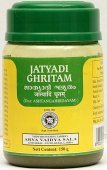Nimbapatra, Nimba-patra: 5 definitions
Introduction:
Nimbapatra means something in Hinduism, Sanskrit. If you want to know the exact meaning, history, etymology or English translation of this term then check out the descriptions on this page. Add your comment or reference to a book if you want to contribute to this summary article.
In Hinduism
Ayurveda (science of life)
Kalpa (Formulas, Drug prescriptions and other Medicinal preparations)
Source: Ancient Science of Life: Yogaśataka of Pandita VararuciNimbapatra (निम्बपत्र) refers to the leaves of Azadirachta indica, and is mentioned in the 10th century Yogaśataka written by Pandita Vararuci.—The Yogaśataka of Pandita Vararuci is an example of this category. This book attracts reader by its very easy language and formulations which can be easily prepared and have small number of herbs (viz., Nimbapatra). It describes only those formulations which are the most common and can be used in majority conditions of diseases.
Veterinary Medicine (The study and treatment of Animals)
Source: Asian Agri-History: Paśu Āyurvēda (Veterinary Medicine) in GaruḍapurāṇaNimbapatra (निम्बपत्र) refers to “Neem leaves” and is used in the protection rites of Horses (Aśvarakṣaṇa), according to Āyurveda sections in the Garuḍapurāṇa.—For the Rakṣa (protection) Revanta-pūjā, (worship of God Revanta) homa (sacrificial offerings) and dvija-bhojana (feeding of Brahmins) should be performed in favor of the horse. And a compound made up of following drugs should be tied round the neck of the horse [e.g., nimbapatra (Neem leaves)] [...].
Agriculture (Krishi) and Vrikshayurveda (study of Plant life)
Source: Shodhganga: Drumavichitrikarnam—Plant mutagenesis in ancient IndiaNimbapatra (निम्बपत्र) (identified with the leaves of Azadirachta indica) is used by certain bio-organical recipes for plant mutagenesis, according to the Vṛkṣāyurveda by Sūrapāla (1000 CE): an encyclopedic work dealing with the study of trees and the principles of ancient Indian agriculture.—Accordingly, “Cocos nucifera is destroyed if fed by water used for cleaning rice. Gossypium herbaceum immediately perishes if fed by water with the leaves of Azadirachta indica [e.g., nimbapatra]”.

Āyurveda (आयुर्वेद, ayurveda) is a branch of Indian science dealing with medicine, herbalism, taxology, anatomy, surgery, alchemy and related topics. Traditional practice of Āyurveda in ancient India dates back to at least the first millenium BC. Literature is commonly written in Sanskrit using various poetic metres.
Vaishnavism (Vaishava dharma)
Source: Prabhupada Books: Sri Caitanya CaritamrtaNimbapatra (निम्बपत्र) refers to “newly grown leaves of Nimba trees”, according to the Śrī Caitanya Caritāmṛta 2.3.44ff—Accordingly:—“[...] amongst the various vegetables were newly grown leaves of nimba trees [viz., nimbapatra] fried with eggplant. The fruit known as paṭola was fried with phulabaḍi, a kind of dhal preparation first mashed and then dried in the sun. There was also a preparation known as kuṣmāṇḍa-mānacāki. [...] Thus Lord Kṛṣṇa was offered all the food, and the Lord took it very pleasantly”

Vaishnava (वैष्णव, vaiṣṇava) or vaishnavism (vaiṣṇavism) represents a tradition of Hinduism worshipping Vishnu as the supreme Lord. Similar to the Shaktism and Shaivism traditions, Vaishnavism also developed as an individual movement, famous for its exposition of the dashavatara (‘ten avatars of Vishnu’).
Sports, Arts and Entertainment (wordly enjoyments)
Source: archive.org: Syainika Sastra of Rudradeva with English Translation (art)Nimbapatra (निम्बपत्र) refers to the “leaves of neem” (used in the treatment of Hawks), according to the Śyainika-śāstra: a Sanskrit treatise dealing with the divisions and benefits of Hunting and Hawking, written by Rājā Rudradeva (or Candradeva) in possibly the 13th century.—Accordingly, [while discussing the treatment of hawks]: “If a white spot forms on the eyes owing to heat, smoke or some kind of hurt, [...] Or a pill made of the following drugs in equal quantities, soaked in goat’s urine and dried in the shade, may be given ; turmeric, leaves of nīm/neem (nimbapatra), pepper, yellow myrobalan, long pepper, Cyperus rotundus, and viḍaṅga. It should be administered with honey and goat’s milk in the case of the red kind of birds. This pill destroys the spot, as if the pill had been made by Rudra”.

This section covers the skills and profiencies of the Kalas (“performing arts”) and Shastras (“sciences”) involving ancient Indian traditions of sports, games, arts, entertainment, love-making and other means of wordly enjoyments. Traditionally these topics were dealt with in Sanskrit treatises explaing the philosophy and the justification of enjoying the pleasures of the senses.
See also (Relevant definitions)
Partial matches: Patra, Nimba.
Full-text: Nimba, Acacia catechu, Raktamokshana, Blood-letting, Khadira, Kushtha, Kushthacikitsa, Triphala, Azadirachta indica, Curd, Saktukapindika, Dadhi, Ashvarakshana.
Relevant text
Search found 3 books and stories containing Nimbapatra, Nimba-patra; (plurals include: Nimbapatras, patras). You can also click to the full overview containing English textual excerpts. Below are direct links for the most relevant articles:
Bhesajjakkhandhaka (Chapter on Medicine) (by Hin-tak Sik)
Medicines (c): Leaves (Paṇṇa/Patra) < [Chapter 4 - Medicinal Substances in the Chapter on Medicine]
Matangalila and Hastyayurveda (study) (by Chandrima Das)
Sushruta Samhita, Volume 5: Kalpasthana (by Kaviraj Kunja Lal Bhishagratna)
Related products



